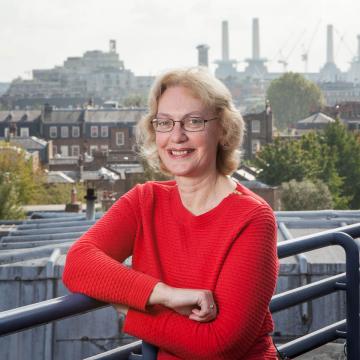The current issue of the RSA Journal examines many aspects of ‘The fabric of place’. It reports in depth on the Heritage Lottery Funded work to develop a Heritage Index to ‘act as a catalyst for a richer local conversation about heritage and its role’ and it is exciting to see that Matthew Taylor regards this heritage focussed work as an example of ‘how the RSA can develop an innovative model of change, combining primary research, data analysis, mass communication, network building and Fellowship mobilisation’. As a Fellow myself, I share his enthusiasm for developing the role the RSA can play in offering such models of change.
The challenge, I would suggest, is ensuring that, in modelling, we remain very aware of the need to hear the voices of the whole community, and not simply those which are most engaged and articulate. Not only the HLF funded ‘Heritage, Identity and Place’ project run by the RSA, but also the Big Lottery funded Connected Communities programme (also referenced in the Journal) suggests that ‘investing in building relationships within communities can generate…greater well-being, economic gains, enhanced citizen empowerment and improved public service capacity’. This ‘community capital’ is at its strongest when all members of the community feel that they are able to be part of the conversation.
So how do we avoid simply talking to like minded people, the classic ‘preaching to the converted’ problem that we have all seen, arriving at conferences and on-line conversations to recognise the same committed and convinced individuals and organisations that we met the week before and the week before that? Gillian Tett suggests a simple strategy for disrupting our on-line communities and conversations, taken from Dick Costolo, former CEO of Twitter: ‘every week, or every month,..change around the people [you] follow’ . That’s a great, and very practical, idea, which I for one am going to adopt.
There’s an additional approach, which might be summarised as ‘offer, don’t organise’. At HLF, we provide all kinds of guidance to those groups and organisations which might use our funding to support their projects. We have on-line materials, case studies, development staff for 1:1 discussions, and a relatively new on-line community where we hope the conversation will develop between others and not be driven by us. We know a lot about what makes a great heritage project and where the pitfalls might be, and we want to share that knowledge. But we are very clear about one thing: we do not run projects ourselves, we offer funding to other people’s projects. And sometimes that can be frustrating, when advice isn’t taken or an organisation doesn’t come back with the great application we were expecting. But it is absolutely essential if we are to avoid falling into the ‘funder knows best’ trap.
It seems to me that this is also a good approach for those of us who want to support grass roots community development, build capacity, share expertise and generally engage with our fellow citizens. And it means accepting that, however enthusiastic we professionals may be, we will not always be the right people to take ideas forward if, by doing so, we inadvertently stifle the voices of those who have a different experience to offer .
If, with the interest, commitment, skills and funding we have available, communities are not taking us up on our offer of assistance, perhaps we are not listening carefully enough to what it is that is really needed. Or perhaps we are not in the right places at the right times to engage. As Jonathan Schifferes puts it: ‘to genuinely empower citizens to play a stronger role means making information accessible and valuing community generated knowledge’.
So as well as disrupting our on-line communications, perhaps we should be disrupting our face to face engagement. Susan Silberberg suggests that focussing on ‘making’, not just ‘places’, ‘is a process that cannot be accomplished by experts or professionals alone’. We need to ‘empower people and nurture communities’. I believe that the very best heritage projects do just that, by giving everyone a voice and ensuring that different experiences are reflected in the histories that are remembered, recorded and recognised.
Peter Luff, HLF’s Chair, emphasised the importance of this approach in his speech to our Inclusive Heritage conference on 30 October, and again in talking to the Museums’ Association on 5 November. He is determined that HLF will be open to all those who have a history and heritage that they want to explore and share.
Our challenge is to spread that message, so that it is heard by everyone. We may then need to understand why some groups and individuals have no wish to engage with us, and tackle any barriers which we have inadvertently established. But ultimately we will have to accept that different groups have different interests and passions. Mine is heritage working for people. It won’t be everyone’s. And that’s fine.
Carole Souter CBE, Chief Executive, Heritage Lottery Fund. You can follow her @CaroleSouter.
Related articles
-
Blog: Heritage for the Future. Join the Debate.
Clare Devaney
In November 2015, the RSA and HLF will co-host Heritage Question Time panel debates in Bristol and Greater Manchester. Join the debate!
-
Blog: Conserving the intangible: changing the image of heritage
Thomas Hauschildt
Googling for “Visit England” you will quickly find results listing impressive buildings, monuments and archaeological sites, and places of natural beauty. The Palace of Westminster, Stonehenge, the coast line of Dorset and East Devon are all forms of tangible heritage closely connected to the UK’s heritage, known by every household in Britain and many abroad.


Be the first to write a comment
Comments
Please login to post a comment or reply
Don't have an account? Click here to register.